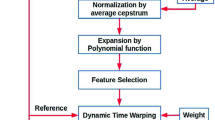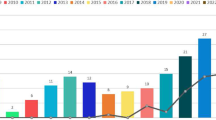Abstract
The dominant model for speaker recognition keeps Gaussian Mixture Model (GMM), though hidden Markov model (HMM) is successfully used in speech recognition. And then, few attentions have been paid on the correlation of features when modeling in the speaker recognition system, which may improve the final performance. Coincidentally, state-space model (SSM) is a model relying on the features correlation. A novel speaker identification method using a SSM based on the speaker features is proposed. The SSM, which has never been used in speaker identification before, presents the advantage of explicitly modeling spectral parameter trajectory dynamically. The preliminary system in our paper, directly regarding Mel frequency cepstrum coefficient (MFCC) as features, was set up to prove the correctness of SSM using in speaker recognition. The senior experiments, using supervectors, further explained the importance of the inner relationship of the speaker features, since considering SSM into GMM-UBM supervectors shows better accuracy, although just winning about 1 % in Arabic digital experiment.





Similar content being viewed by others
References
Campbell, J. P, Jr. (1997). Speaker recognition: A tutorial. Proceedings of the IEEE, 85(9), 1437–1462.
Digalakis, V., Rohlicek, J. R., & Ostendorf, M. (1993). ML estimation of a stochastic linear system with the EM algorithm and its application to speech recognition. IEEE Transactions on Speech and Audio Processing, 1(4), 431–442.
Grivel, E., Gabrea, M., & Najim, M. (1999). Subspace state space model identification for speech enhancement. IEEE International Conference on Acoustics, Speech, and Signal Processing, 2, 781–784.
Jiang, Y., Lee, K. A., & Wang, L. (2014). PLDA in the i-supervector space for text-independent speaker verification. EURASIP Journal on Audio, Speech, and Music Processing, 1, 1–13.
Kinnunen, T., & Li, H. (2010). An overview of text-independent speaker recognition: from features to supervectors. Speech Communication, 52(1), 12–40.
Lee, K. A., Larcher, A., You, C. H., Ma, B., & Li, H. (2013). Multi-session PLDA scoring of i-vector for partially open-set speaker detection, INTERSPEECH, pp. 3651–3655.
Lichman, M. (2013). UCI machine learning repository [http://archive.ics.uci.edu/ml]. Irvine, CA: University of California, School of Information and Computer Science.
Reynolds, D. A., & Rose, R. C. (1995). Robust text-independent speaker identification using Gaussian mixture speaker models. IEEE Transactions on Speech and Audio Processing, 3(1), 72–83.
Roweis, S., & Ghahramani, Z. (1999). A unifying review of linear Gaussian models. Neural Computation, 11(2), 305–345.
Xu, N., Yang, Z., Zhang, L. H., Zhu, W. P., & Bao, J. Y. (2009a). Voice conversion based on state-space model for modelling spectral trajectory. Electronics Letters, 45(14), 763–764.
Xu, N., Yang, Z., & Zhu, W. P. (2009). Modeling articulatory movements for voice conversion using state-space model. Fifth international conference on natural computation, 5.
Acknowledgments
This work is supported by the National Natural Science Foundation of China (Nos. 60971129, 61271335), the Scientific Innovation Research Programs of College Graduate in Jiangsu Province (No. CXZZ13_0488), Key Laboratory of the Ministry of Public Security Smart Speech Technology (No. 2014ISTKFK T02), the Natural Science Foundation of Jiangsu Province (No. BK20140891), the Natural Science Foundation of the Jiangsu Higher Education Institutions of China (No. 13KJB510020), and China Scholarship Council.
Author information
Authors and Affiliations
Corresponding author
Rights and permissions
About this article
Cite this article
Xu, L., Yang, Z. Speaker identification based on state space model. Int J Speech Technol 19, 407–414 (2016). https://doi.org/10.1007/s10772-015-9297-1
Received:
Accepted:
Published:
Issue Date:
DOI: https://doi.org/10.1007/s10772-015-9297-1




